How Morton Hall's owner has reinvented the art of clematis training
Tiffany Daneff visits Morton Hall in Worcestershire to discover the secret of its owner’s new clematis-training technique. Photographs by Clive Nichols.

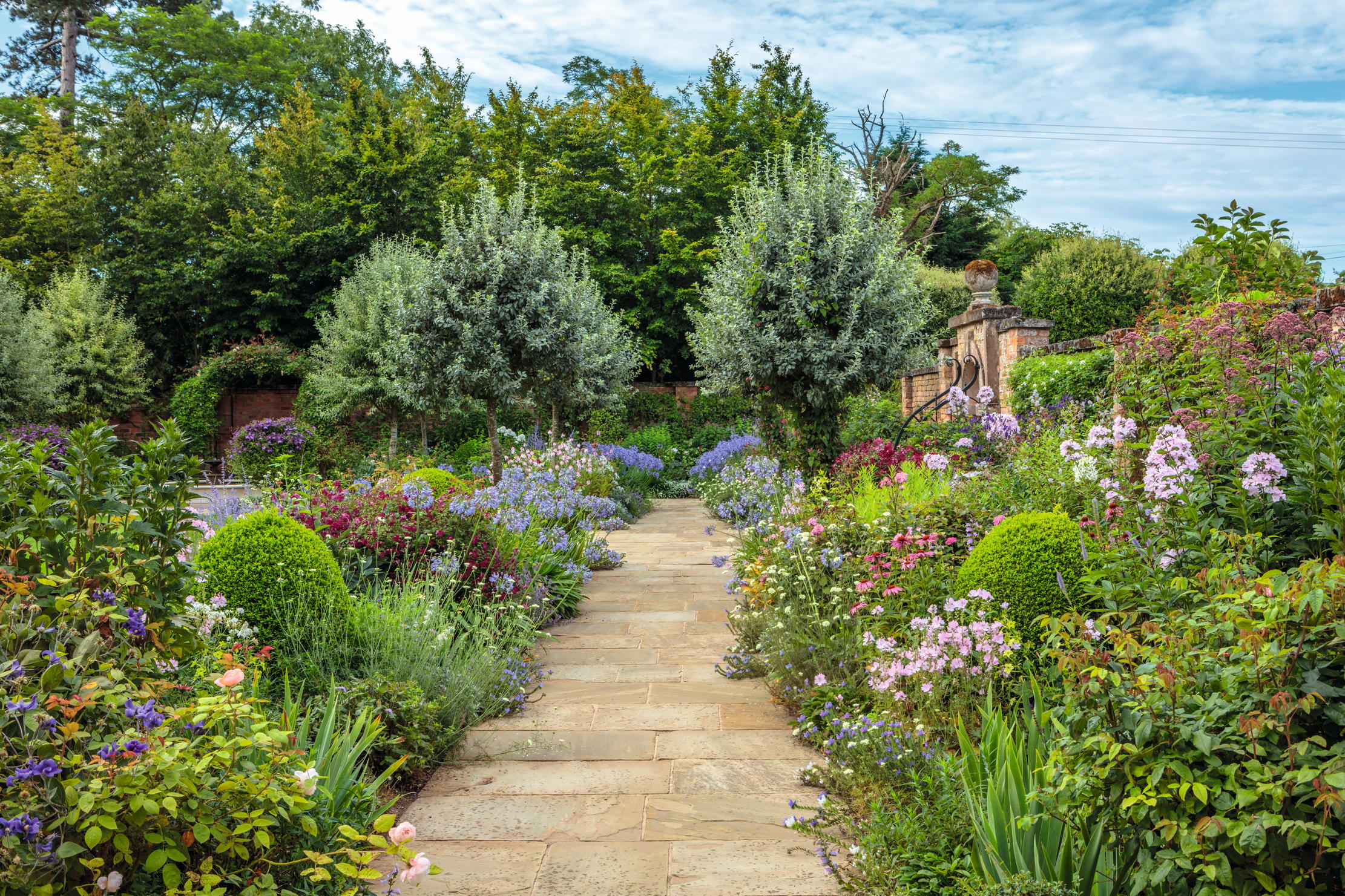
The traditional way to grow clematis in a border is to train it up a large obelisk, but, at Morton Hall gardens in Worcestershire, owner Anne Olivieri and her team have developed a system of training the clematis to the same height as the roses. It’s a technique that’s not only practical — helping to keep the two plants apart as they grow, as well as preventing the clematis from either flopping on the ground or overwhelming the roses — but it delivers a punch of colour.
And that’s not all. The homemade hazel supports look more natural than obelisks, which can seem rather stolid, and, once the plants grow, the hazel twigs disappear from sight.
The system is practised in the L-shaped beds in South Garden at the hall, which were initially designed by clematis expert Charles Chesshire. Roses had been planted in groups of three with a clematis in the centre, but the latter either grew too vigorously and covered everything or else trailed on the ground.
‘In 2013,’ says Mrs Olivieri, ‘we decided to try using V-shaped hazel twigs to lift the clematis off the ground, but, after a year or so, we realised that we needed sturdier supports.’ At the beginning of 2015, they experimented with hazel ‘cages’, which worked for all but the most vigorous plants.
For these, supports were made using thick hazel uprights woven together and strengthened with willow. The results speak for themselves.
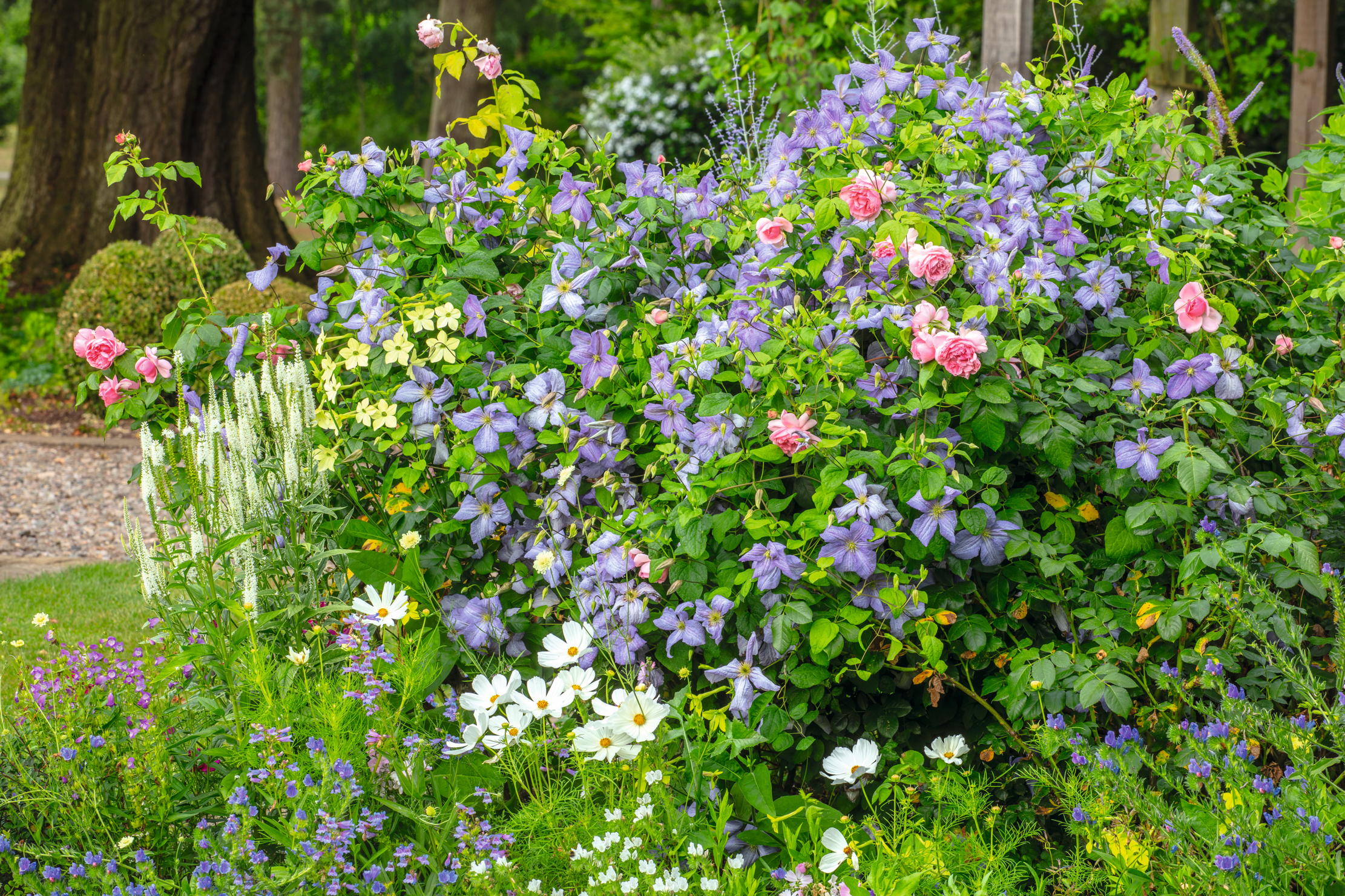
The Morton Hall clematis system
- November At the end of the season, the clematis are taken off the supports and tied up in bundles. These are twisted around and tied to an iron hoop, to keep them out of the way when the tulips are planted
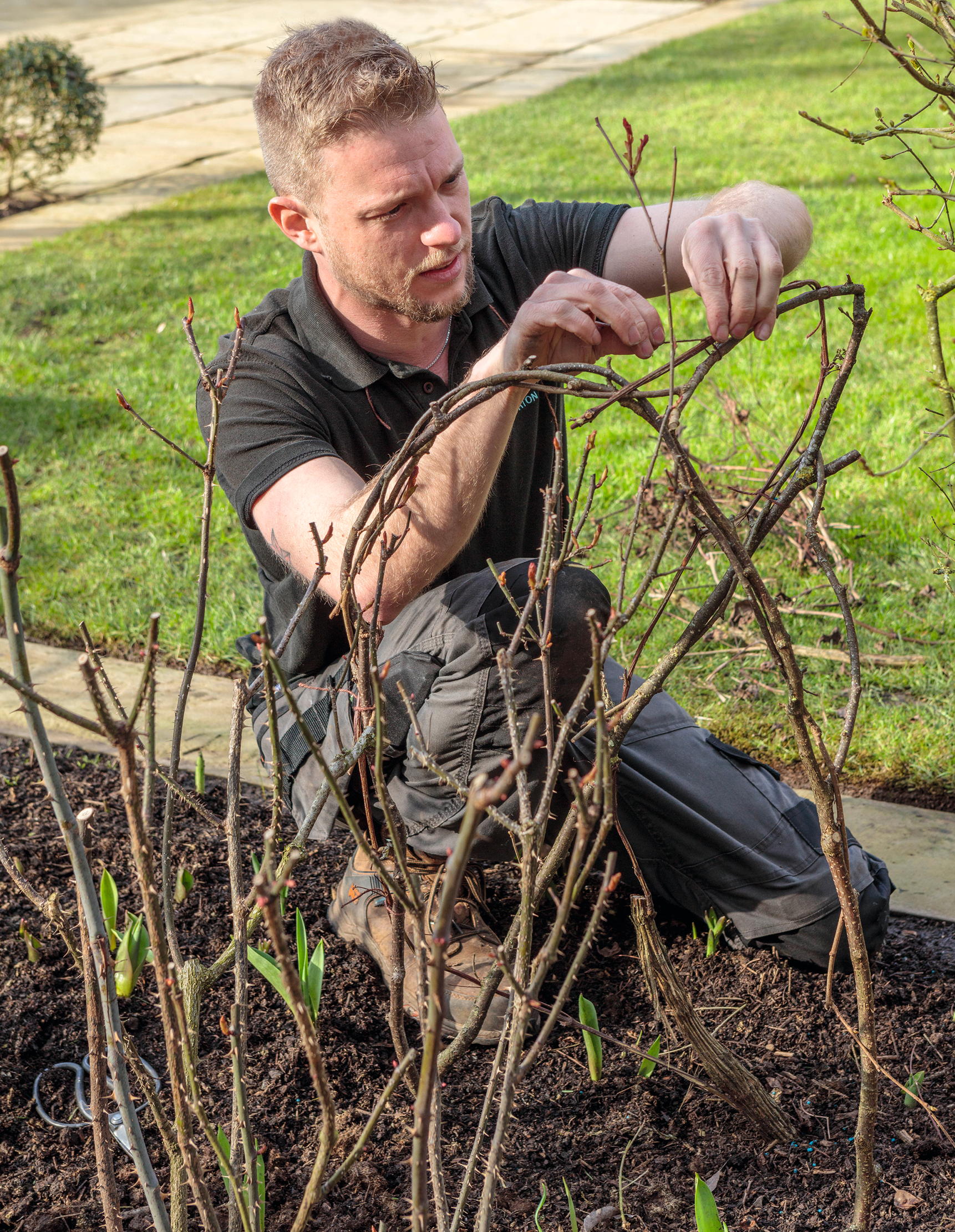
- December/January Hazel stems are coppiced when feathery and flexible, with any catkins cut off
- January After Christmas, the roses are pruned and the supports built. Hazel supports are made by bending branches and twisting the ends together to create a ‘cage’. Stronger supports for vigorous roses and clematis can be made using 1in-diameter hazel uprights and weaving willow wands around them, which are tied to the hazel with twine
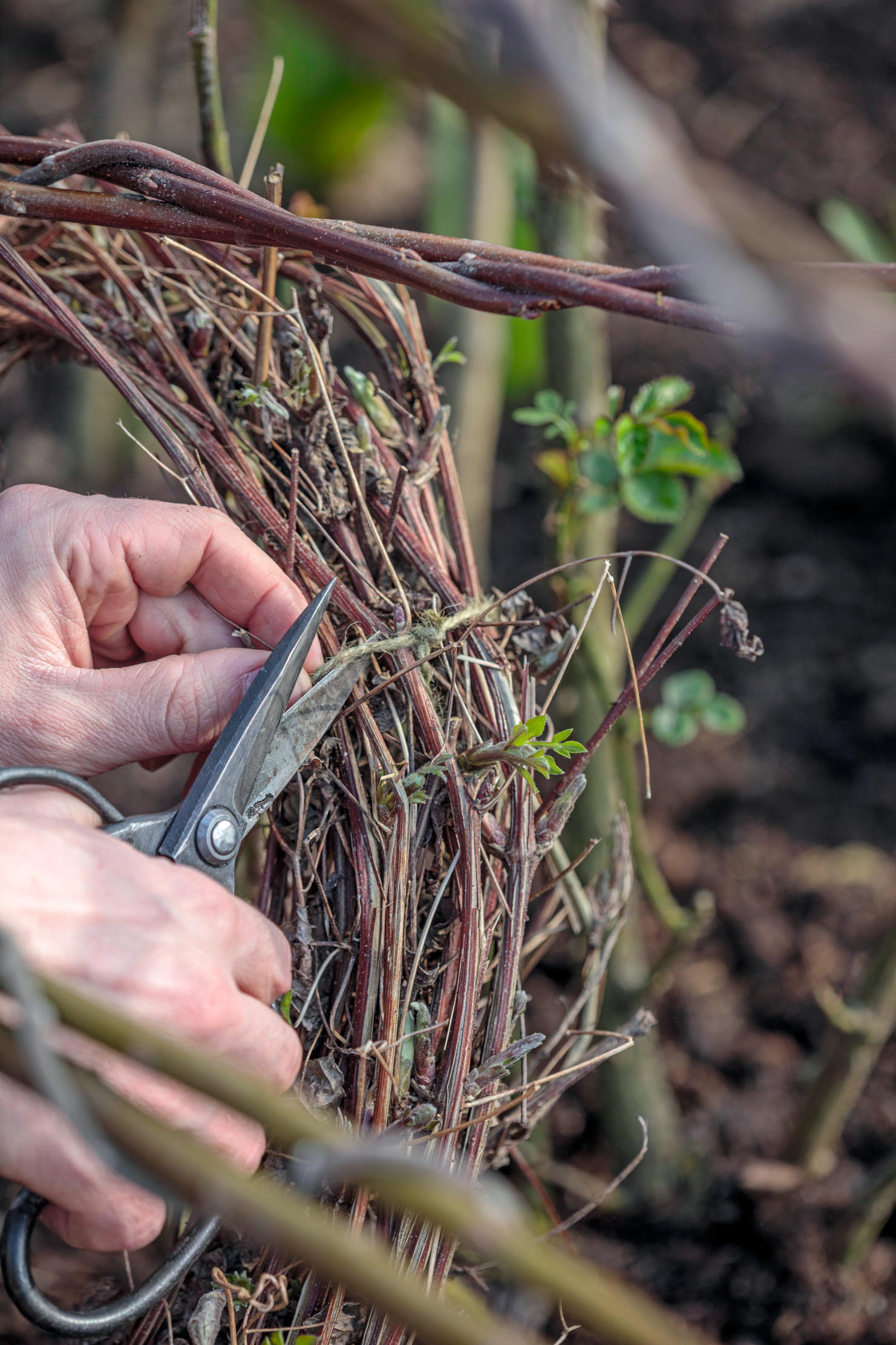
- February Towards the end of the month, the clematis are pruned to a pair of healthy buds. ‘We leave a little more length than the usual 1ft—perhaps a yard or so—depending on where it is going to be guided,’ says Morton Hall head gardener Oli Johnson. The beds are generously manured
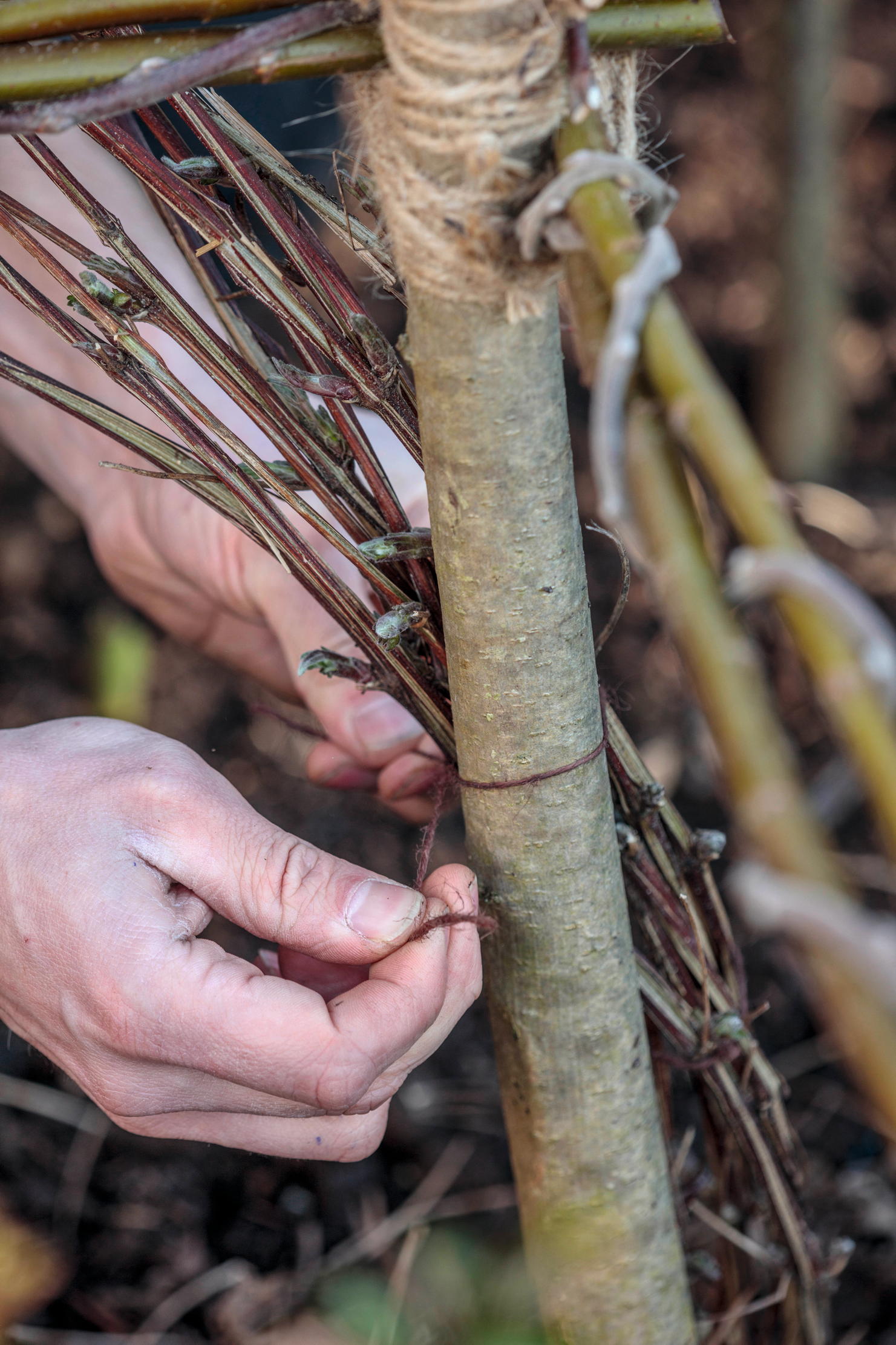
- March The roses and clematis are fed with a slow-release fertiliser, such as pelleted Vitax Q4

- March to mid May As the clematis grow, they are checked regularly, with stems tied to the supports to keep them out of the roses
- Mid May When the roses and clematis are at the same height, the clematis are left to their own devices
The system works with Group 2 and Group 3 clematis, although Group 3 Viticellas are used more as they flower later, after the roses, thus extending the colour. They can also take harder pruning. (Group 2 flowers appear at the same time as the roses.) ‘Later in the summer, we get a second flush, with the roses and clematis together.’
The fun is in deciding what to plant with what. Here, they have paired ice-blue Clematis ‘Blue Angel’ with the lovely mid-pink old rose ‘Jacques Cartier’, the white C. ‘Prince George’ with the deep-red Rosa ‘Munstead Wood’ and the pink Bourbon rose ‘Louise Odier’ with C. texensis ‘Peveril Profusion’, which has distinctive light-pink edging to the plum-pink petals. ‘Endless combinations are possible,’ says Mrs Olivieri, who finds that the system has the added benefit of requiring little planting space, yet delivers a huge volume of blooms.
Exquisite houses, the beauty of Nature, and how to get the most from your life, straight to your inbox.
Where both plants are vigorous — such as with the pairing of Clematis ‘Chatsworth’ with Rosa ‘Felicia’, the supports can be extended to encompass the growth. In one pairing, C. ‘Emilia Plater’ proved too much for its partner R. ‘Falstaff’ and has been replaced by C. ‘Victoria’, which is also large flowered and vigorous, but better behaved.
How does it work? ‘Roses and clematis are treated as a pair,’ explains Mrs Olivieri. ‘Both are pruned just after Christmas, so that every-thing is done and out of the way before the tulips begin to shoot underground.’ At the same time, the hazel supports are made or refurbished. Most of the roses will only need hazel wands, which are coppiced before Christmas and replaced annually, but the more vigorous of them have 1in-diameter hazel uprights secured with plaited willow. These bigger supports generally last two years, although the willow will need replacing annually. The clematis is left longer than the usual 1ft from the ground, so that the stems are long enough to tie in different directions onto the new supports. As they grow, they are checked twice a week and tied in to ensure they don’t get tangled with the roses. Come mid May, when the roses and clematis are at the same level, they are left to grow freely.
A similar technique is used to encourage clematis into small trees, whereby a V-shaped hazel stem is leant against the trunk of an ornamental pear, lilac or magnolia with the clematis gradually tied in. The gardeners also train clematis into laurels, osmanthus and elaeagnus. A hazel cage erected next to a laurel, for example, allows the clematis to grow up on the support until it reaches the right height for the stems to be tucked into the evergreen. Previously, without such support, the weight of the clematis created holes in the tree.
‘Preparation is everything,’ says Mrs Olivieri. ‘It is really worth making the effort early in the year when there isn’t much else to do, as it saves so much time later in the summer.’
Previously the Editor of GardenLife, Tiffany has also written and ghostwritten several books. She launched The Telegraph gardening section and was editor of IntoGardens magazine. She has chaired talks and in conversations with leading garden designers. She gardens in a wind-swept frost pocket in Northamptonshire and is learning not to mind — too much — about sharing her plot with the resident rabbits and moles.
